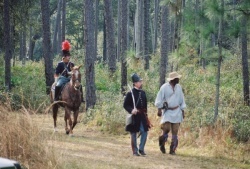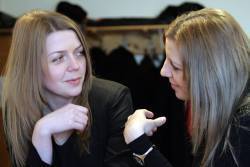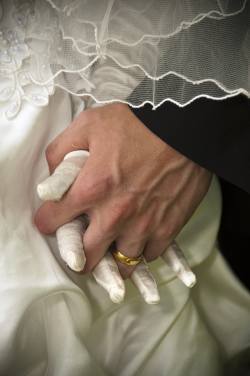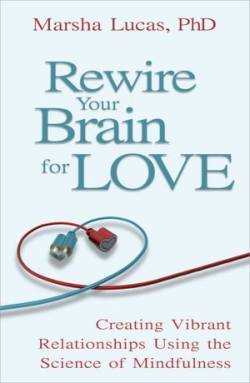Doug Dillon's Blog, page 187
April 3, 2012
Pyramids in a National Cemetery: St. Augustine, FL
Pyramids? In a National Cemetery? You bet. Built out of local shell stone called coquina, the three pyramids in St. Augustine cover the remains of 1,468 soldiers who died in the Second Seminole War (1835-1842). At the end of the war in 1842, the U.S. government collected those remains from battlefields across the state and transported them to this cemetery in northeast Florida.
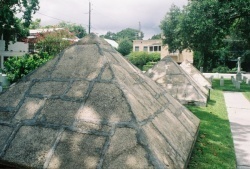 That war began when a large band of Seminole warriors destroyed a force of over 100 U.S. soldiers under the Command of Major Dade at the present day location of Bushnell, Florida. The remains of most of those soldiers are buried beneath the pyramids with their comrades.
That war began when a large band of Seminole warriors destroyed a force of over 100 U.S. soldiers under the Command of Major Dade at the present day location of Bushnell, Florida. The remains of most of those soldiers are buried beneath the pyramids with their comrades.
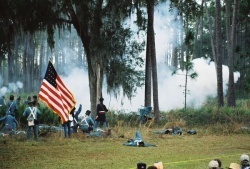 The Seminoles were resisting the government's efforts to relocate all Native Americans west of the Mississippi River to present day Oklahoma. In the end, however, after the loss of thousands of lives, most of the remaining Seminoles were relocated. Sad as that was,
The Seminoles were resisting the government's efforts to relocate all Native Americans west of the Mississippi River to present day Oklahoma. In the end, however, after the loss of thousands of lives, most of the remaining Seminoles were relocated. Sad as that was, 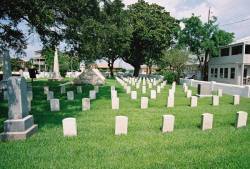 another tragedy occurred as well. After the war, the many African Americans living with the Seminoles as their allies were considered escaped slaves. These Black Seminoles as they were called, found themselves back in bondage.
another tragedy occurred as well. After the war, the many African Americans living with the Seminoles as their allies were considered escaped slaves. These Black Seminoles as they were called, found themselves back in bondage.
Annually, right after the first of the year, a reenactment of the Dade battle occurs in Bushnell, Florida, offered by the Dade Battlefield Society. It is a very accurate demonstration of what happened on that day in 1835 but it is also a time for everyone of goodwill in attendance to recall how injustice towards any group of people is a knife that rips the very fabric of society and endangers all.
I've created a number of photo galleries showing both the St. Augustine National Cemetery, Dade Battlefield Park in Bushnell and the reenactment itself. Links to each are below if you would like to see more:
The St. Augustine National Cemetery
Dade Battlefield Park in Bushnell, FL
The Dade Battle Reenactment, Part I
The Dade Battle Reenactment, Part II
Listed below are links to websites that you might also find interesting:
The St. Augustine National Cemetery
April 1, 2012
Trayvon Martin. Justice in Central Florida?
Civil liberties? Justice? Equality? Safety? All of those things are in question not just north of where I live here in Central Florida but in the rest of this state as well. The recent killing of an African American young man and the release without arrest of his killer has instantly thrown us back into "the bad old days." Or has it? I hate to say so but that horrible event has actually shown us how far we yet have to go.
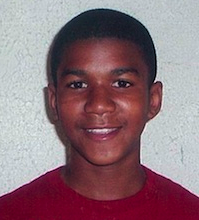 We call Florida "The Sunshine State". Well, you know what? The sun is shining on us down here in a way it never has before. It's shining through the huge lens of a magnifying glass that is going continue to make it very, very hot around here. And that's a good thing.
We call Florida "The Sunshine State". Well, you know what? The sun is shining on us down here in a way it never has before. It's shining through the huge lens of a magnifying glass that is going continue to make it very, very hot around here. And that's a good thing.
With that heat, we need to burn away the remaining vestiges of the past in Central Florida as well as in the rest of our state. Not only that, but continued application of this heat needs to rid us of dangerous and regressive pieces of legislation we have passed in our part of the country. One such law is called "Stand Your Ground". This is the disgusting excuse that evidently helped to allow the release of Trayvon Martin's killer without arrest.
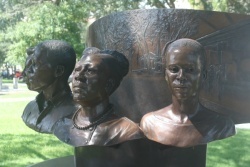 When I visited St. Augustine, FL last fall, I was so delighted to find a new monument in that old city's central plaza. It's a wonderful tribute to participants in the Civil Rights Movement during those harsh and dark days of the 1960s. What a welcome change in the city founded by the Spanish so very long ago.
When I visited St. Augustine, FL last fall, I was so delighted to find a new monument in that old city's central plaza. It's a wonderful tribute to participants in the Civil Rights Movement during those harsh and dark days of the 1960s. What a welcome change in the city founded by the Spanish so very long ago.
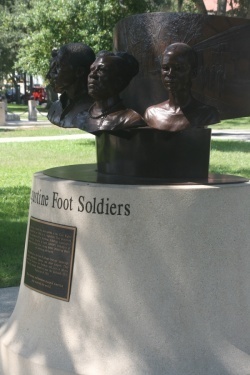 Why is what I just wrote in the previous paragraph relevant? Well, I'll tell you why. Sadly, the city of Sanford, where the killing of Trayvon Martin occurred, has a lot of healing to do. As one of the many steps in this process, I have a recommendation for the good citizens of that city and it's leadership. Once justice is actually done, and it needs to be done quickly, plans should immediately begin for the construction of a monument in Sanford along the lines of the one in St. Augustine. This monument, however, should be a tribute to reconciliation and justice, with Trayvon Martin at it's center. In this way, all people of goodwill in the community and elsewhere can come together with a solemn yet joyous unveiling that celebrates the words–NEVER AGAIN!
Why is what I just wrote in the previous paragraph relevant? Well, I'll tell you why. Sadly, the city of Sanford, where the killing of Trayvon Martin occurred, has a lot of healing to do. As one of the many steps in this process, I have a recommendation for the good citizens of that city and it's leadership. Once justice is actually done, and it needs to be done quickly, plans should immediately begin for the construction of a monument in Sanford along the lines of the one in St. Augustine. This monument, however, should be a tribute to reconciliation and justice, with Trayvon Martin at it's center. In this way, all people of goodwill in the community and elsewhere can come together with a solemn yet joyous unveiling that celebrates the words–NEVER AGAIN!
And to the state of Florida, I say it's time to repeal that horrendous "Stand Your Ground Law". We are starting to revert to the old west and that we do not need.
And, of course, my heart goes out to Trayvon's parents, relatives and friends. God bless you all.
Enough said for now. I don't usually rant but this situation couldn't be overlooked. If you're interested in the original blog posting I did on the St. Augustine monument, click here.
March 27, 2012
Nine Ways That a Meditating Brain Creates Better Relationships

Dr. Marsha Lucas
It's never too late to have a (brain that's wired as if it had a) happy childhood1
Therapists get this question a lot: "Okay, so now that I understand how my history made me a mess when it comes to relationships, what now? It's not like I can go back in time and change my childhood."
The "what now" is that there's increasing evidence that the simple practice of mindfulness meditation can re-wire your brain. In key areas, you can literally change and grow neural connections which support finding and creating better relationships. And in nine different ways, your brain can become more like those who grew up knowing how to love and be loved in healthy, sustainable ways.
As a psychologist helping others find their way to greater emotional well-being, I find that the most compelling benefits of a regular mindfulness meditation practice are a set of nine documented results.2 (I mentioned them in my previous post, Mindfulness Meditation + Neuroscience = Healthier Relationships.) I've seen the results confirmed through my psychology practice, in myself, and in the lives of my friends and colleagues.
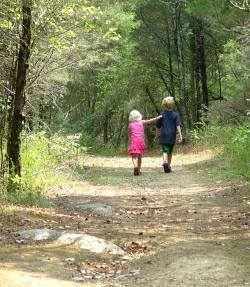 At least seven of these nine benefits bear a remarkable resemblance to the characteristics of people who grew up with healthy, attuned attachments. Childhood attachment experiences have a huge impact on how we are wired for relationships, throughout our lives.
At least seven of these nine benefits bear a remarkable resemblance to the characteristics of people who grew up with healthy, attuned attachments. Childhood attachment experiences have a huge impact on how we are wired for relationships, throughout our lives.
So, if we can change our brain to work more like those people with healthy attachment histories, we too can have a brain that's wired as if it had a happy childhood.
NINE WAYS THAT A MEDITATING BRAIN CREATES BETTER RELATIONSHIPS
When I first learned about these from Dan Siegel, MD, I was stunned that something as simple as mindfulness meditation could make such inroads with the challenges of finding and creating healthy relationships.2 Take a look at these benefits:
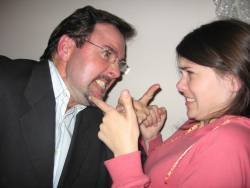 1. Better management of your body's reactions.
1. Better management of your body's reactions.
Stress and anger lose their grip on your body more quickly and easily. When you get home from a hard day at work, you aren't still carrying the pent-up tension and frustration in your body, and so you won't be driven towards an angry reaction to your partner's benign comment.
In a way, it's like re-setting your body's "alarm" button when it's gotten stuck in the "ON" position. Vital to your relationships is your ability to (a) recognize that that's what's going on, (b) understand what is happening in your brain and body that is keeping you there, and (c) un-stick that alarm button.
Being able to correct or repair unpleasant moods more quickly, without just sweeping them under the rug of resentments, frees you up to be less stressed by emotional upset, and more available to the next good thing.
Regulating your emotions doesn't mean ignoring them, denying them, or cramming them deep inside (they eventually erupt anyway, but in festered form). The trick is to be able to get yourself back to baseline with relative ease and efficiency.
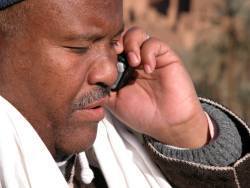 3. Better, more "tuned in" communication. Research on attachment and healthy brain development shows that having someone be attuned to you – they listen and "get" you without distortion, and respond in a way which is actually contingent upon you instead of just their own inner stuff — is one of the chief ways that your brain gets organized for well-being.
3. Better, more "tuned in" communication. Research on attachment and healthy brain development shows that having someone be attuned to you – they listen and "get" you without distortion, and respond in a way which is actually contingent upon you instead of just their own inner stuff — is one of the chief ways that your brain gets organized for well-being.
That's true in childhood, and we're now learning that it's also true for adults. Mindfulness meditation helps you to be a more attuned communicator. Even better, new evidence suggests that the more you practice this kind of "attuned" communication, the more likely that your significant other will get better at it, as well. (More on that in another post.)
We often have a fairly limited repertoire of how we respond to those situations that just "set us off." Some people always blame and yell when they feel ashamed; others cry whenever receiving criticism, even if it is constructive and positive.
The habits of our nervous system can seem like electrical surges, leaving us vulnerable to making a real mess when we don't mean to. Having an emotional circuit breaker makes a real difference – creating the space for you to have a more mindful, conscious response. Mindfulness meditation, by beefing up areas which essentially buy us a tiny bit more time before we respond in a knee-jerk way, improves response flexibility.
There are some common misconceptions about empathy. Being empathic isn't about being a doormat, or mind-reader. It's also not about fear (I need to read this person really well so he doesn't get angry and hit me).
Being able to "get" and understand another person's state of mind is essential for healthy relationships, but being able to do so without losing your awareness of your own state of mind is vitally important. Getting your brain to let you perceive someone else, without your protective gear and lenses, and without getting lost in their "stuff," is something that mindfulness meditation does extremely well.
 6. Improved insight (self-knowing).
6. Improved insight (self-knowing).
Getting to know yourself in a real way, and within a coherent framework (How did I get here?), results in being far less vulnerable to getting lost when it comes to being in relationship with others.
When we meditate regularly, we're practicing our ability to notice what our brain is up to — what the thoughts are, what the feelings are.
We become increasingly able to tell the difference between those momentary and ever-changing events, and who we really are. Through meditation practice, the brain gets re-wired and "remembers," more often and more easily, who you really are – not just your thoughts and feelings, so they don't carry you away.
If you're able to be more comfortable with things which once scared you (He's going to leave me; I'm not enough for her), and not as reactive to emotional fear, you change your entire experience of being in an adult-to-adult relationship with others.
It's important in relationships to have ready access to being able to soothe yourself when you're afraid, so that your reactions and interactions aren't overrun by your fight-flight-freeze response. There is compelling research on the brain mechanisms underlying the flexible control of fear, and those are remarkably similar to the brain areas which change in response to mindfulness meditation.
There's actually increasing neurochemical and cellular evidence of a sort of second brain in our gut (okay, viscera). Most of us are familiar with having some kind of "gut feeling," usually in response to something that has our attention. But what about all of those times when we're an auto-pilot, or distracted? Is the information in our gut turned "off'?
Hardly. Our viscera, and the rest of our body – our muscles, eyes, ears, skin, and so on – are telling us something. Most of the time, we ignore these messages, but the mindfulness practice of being more aware of what your body is telling you enhances the ability to be attuned to yourself, and what you unconsciously know – what we can refer to as "intuition."
Becoming emotionally "smarter" – by using the extra information from your non-brain parts – enhances your ability to be in mindfully aware, conscious relationships with yourself and with others.
In addition to healthier, happier relationships with your partner and circle of friends, is there anything that comes from the first eight benefits?
The research on mindfulness shows that when people learn to meditate and practice regularly, their perceptions of their place in the world begins to shift – something corroborated by family members. They become more broadly compassionate, more likely to act on their highest principles, and demonstrate greater interest in the social good – what can very reasonably seen as living with higher morals. It's like having a healthier relationship with your whole community, not just the people closest to you.
An impressive list! It does take practice – and the practice is simple, but not easy. The good news is that some of the research shows that you can see changes as little as twenty minutes of practice a day (and some experts say that you can benefit with even less than that – the trick is to be sure it is a regular, daily practice). I invite you to give it a try.
1Gratefully adapted from Tom Robbins: Still Life With Woodpecker
2For those who want to learn more about the research behind these nine factors, Dan Siegel has a great book, The Mindful Brain, where he provides references to many of the research articles relevant to these nine benefits.
Thanks, Marsha for sharing with us a very valuable outlook.
Click here to find Masha's book online.
March 24, 2012
SW Florida Reading Fest: A Wonderful Event
 What a great time Barb and I had at the 2012 Southwest Florida Reading Festival in Fort Myers this past Saturday. We had so much fun talking to people and selling books. The weather was perfect and there were no glitches. Couldn't have been better. My better half joined me for this event since she was my co-author for our book, An Explosion of Being.
What a great time Barb and I had at the 2012 Southwest Florida Reading Festival in Fort Myers this past Saturday. We had so much fun talking to people and selling books. The weather was perfect and there were no glitches. Couldn't have been better. My better half joined me for this event since she was my co-author for our book, An Explosion of Being.
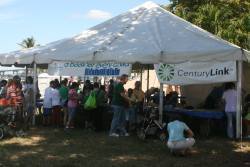 Organized by the Lee County Library System, this was the 13th such annual event and I have no doubt it will continue for many years to come.
Organized by the Lee County Library System, this was the 13th such annual event and I have no doubt it will continue for many years to come.
Debbie West and her crew of staff members and volunteers did an exceptional job of coordinating the exhibit booths. We're definitely going back next year. Wouldn't miss it.
 Held at the Harborside Event Center in downtown Fort Myers, the festival drew a huge crowd of people numbering between between 18,000 and 20,000. The facility was beautiful and very comfortable.
Held at the Harborside Event Center in downtown Fort Myers, the festival drew a huge crowd of people numbering between between 18,000 and 20,000. The facility was beautiful and very comfortable.
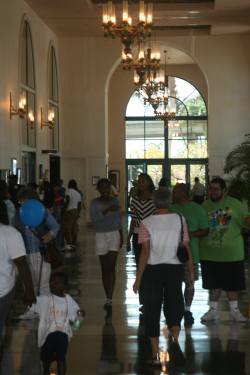 What struck me as a someone who writes for young adults was the tremendous number of families who attended. Parents and kids were everywhere. What a delightful thing to see in this day and age when families can be torn apart by so many circumstances. This was a true community event that definitely contributed not only to the literacy of the region but also to its social stability.
What struck me as a someone who writes for young adults was the tremendous number of families who attended. Parents and kids were everywhere. What a delightful thing to see in this day and age when families can be torn apart by so many circumstances. This was a true community event that definitely contributed not only to the literacy of the region but also to its social stability.
 For any of you authors out there, the Southwest Florida Reading Festival is the place to be. Without question, it's worth your time and the registration fee. Hope to see you there next March. Click here for their website.
For any of you authors out there, the Southwest Florida Reading Festival is the place to be. Without question, it's worth your time and the registration fee. Hope to see you there next March. Click here for their website.
March 23, 2012
St. Augustine National Cemetery
March 22, 2012
Florida Film Festival – Every April
 10 days of film, food, fun and celebrities!
10 days of film, food, fun and celebrities!
The festival's 21st Anniversary!
Best in current independent and foreign cinema
160 cutting edge movies
100 visiting filmmakers
Great fun and excitement. Don't miss it!
Presented by the Enzian Theatre in Winter Park, FL
Click here for more details on the festival.
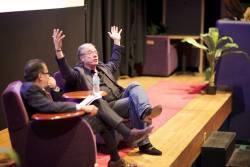
Edward James Olmos at a previous festival
Click here for a previous post on the Enzian Theatrel
March 21, 2012
Waterfront blessing in Old St. Augustine, FL
 In America's oldest city on Palm Sunday every year, the Bishop of the Catholic diocese blesses the fleet. It's a joyous fun-filled gathering at the waterfront with people coming from all over to just watch or actually participate. For 2012, the date for this event will be April 1.
In America's oldest city on Palm Sunday every year, the Bishop of the Catholic diocese blesses the fleet. It's a joyous fun-filled gathering at the waterfront with people coming from all over to just watch or actually participate. For 2012, the date for this event will be April 1.
A time honored tradition since the days when there was a large shrimp fishing fleet in St. Augustine, the blessing is a highly coordinated occurrence involving the city itself and the St. Augustine Yacht club. The bishop blesses them all, from small boats to ships, Catholic and non Catholic alike.
After mass on Palm Sunday, the bishop, parishioners, Knights of Columbus and townspeople dressed as Spaniards from long ago form a procession. It starts at the St. Augustine Cathedral and ends at the city marina. The event usually gets underway around noon and lasts as long as there are boats yet to be blessed waiting in line on the Matanzas River . The time can vary a bit but the peeling of bells from the cathedral signals that things are about to begin.
There's always a large crowd of onlookers but if you get there early enough you can definitely find a place to observe and take pictures.
March 20, 2012
Constitution Plaza in St. Augustine, FL
In historic St. Augustine, Florida, the focal point for that old city is it's central plaza.
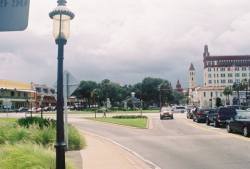 It has been this way since the founding of that old city by the Spanish over 400 years ago. Public and government buildings were built facing the plaza.
It has been this way since the founding of that old city by the Spanish over 400 years ago. Public and government buildings were built facing the plaza.
Two buildings still standing from days long past are the St. Augustine Cathedral and Government House.
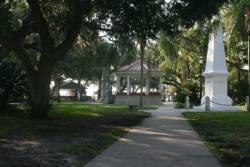 Officially called Constitution Plaza, a large monument was placed there in 1812 to celebrate the creation of Spain's short-lived constitution.
Officially called Constitution Plaza, a large monument was placed there in 1812 to celebrate the creation of Spain's short-lived constitution.
Other monuments in the plaza include a Confederate War Memorial and a memorial celebrating the participants in the Civil Rights Movement era.
As the city center, this area has always been used as a market, a place of celebration and simply where you go to relax. Every week during the summer, the city provides free entertainment there once a week called, Concerts in the Park.
For photo galleries of the plaza, click here and here.
Here are two other links for further viewing and information:
March 17, 2012
Blessing of the Fleet in St. Augustine FL
March 14, 2012
St. Augustine, FL: The Cathedral
The Cathedral-Basilica of St. Augustine is the oldest parish in the continental United States. Established during the celebration of mass in 1565 when Pedro Menendez de Aviles first landed in the area, the parish has been serving the city's faithful Catholics ever since.
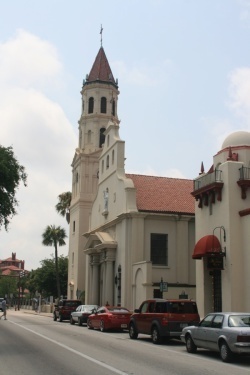 Many church buildings came and went over the years but a permanent coquina-walled structure was completed on the cathedral's present site in 1797. When in 1870 St. Augustine became a diocese (a church district put under the supervision of a bishop and divided into parishes) the church officially became a cathedral.
Many church buildings came and went over the years but a permanent coquina-walled structure was completed on the cathedral's present site in 1797. When in 1870 St. Augustine became a diocese (a church district put under the supervision of a bishop and divided into parishes) the church officially became a cathedral.
Sadly, a fire badly damaged the building in 1887 but the native coquina stone walls survived. The rebuilding included using the old walls but added a new chancel, new trancepts, a tile roof and a huge bell tower.
Today, the front of the cathedral looks much as it did when first built. Set into that portion of the church though, are the original bells, the oldest of which is dated 1689, as well as a statue of St. Augustine of Hippo.
The cathedral's interior contains a vaulted ceiling, richly decorated altars, beautiful chapels, a floor constructed of colorful tiles, dazzling stained glass windows, shrines, and murals depicting historic as well a religious figures.
A visit to St. Augustine is definitely not complete until you've seen this incredible building.
For a photo gallery of the cathedral, click here.
For the cathedral's website, click here.

